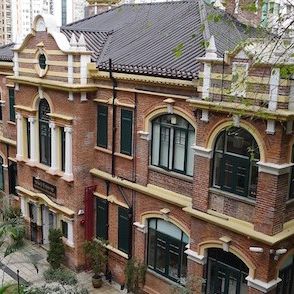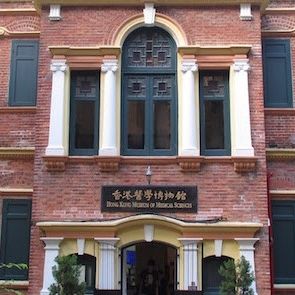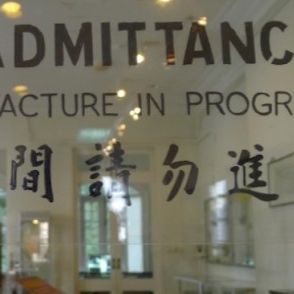
Insights into Hong Kong’s medical history





- 2 Caine Lane 堅巷
- Tues-Sat 10am-5pm; Sun 1pm-5pm
- +852 2549 5123
The ‘Black Death’ in Hong Kong

This area was HK’s Chinese enclave. With the arrival of the British in Hong Kong (1841) the premier sites in Central were reserved for Western-style buildings, Chinese residents and immigrants were urged to move here. It was HK’s first governor Chinese residents and immigrants were urged to move here. It was HK’s first governor Pottinger who optimistically named this Chinese quarter ‘mountain of peace’ or Tai Ping Shan. It did not quite become the quiet enclave he had envisioned. Due to the enormous influx of migrants from the mainland Tai Ping Shan soon became overcrowded, without much daylight or access to clean water. To make things worse, people also kept animals, like pigs, on the premises. The streets were filled with rubbish, the drains overflowing, and the wells were contaminated.
The Europeans avoided the area like the plague, but the plague itself did not! In May 1894 the disease broke out and by the end of the month, an estimated 450 people had died and two thirds of the population had left Hong Kong. At its height, the epidemic was killing 100 people per day and more than half of the plague cases were here in Tai Ping Shan.
The government tried a variety of measures to control the disease: organizing extra hospital wards, searching houses for infected people to isolate cases, disinfecting households and burying the dead. Yet, because of the distrust of Western medicine among the Chinese people, few of the public health initiatives were successful; people even went as far as hiding dead bodies…
From health to heritage

Governor Henry Blake grew so frustrated with the lack of progress to fight the plague that he pleaded with Britain to send a bacteriologist. In 1901 young William Hunter arrived in Hong Kong to establish a Bacteriological Institute, complete with a medical laboratory to monitor diseases and produce vaccines.
The former medical lab is now a museum, giving a unique insight into Hong Kong’s rich medical heritage. The museum tells the dramatic story of the 1894 plague as well as the 2002/2003 SARS epidemic in Hong Kong. It also provides an insightful and lively illustrated comparison of traditional Chinese and Western medicine.
Don’t forget to visit the basement for some vividly portrayed vintage medical equipment and have a wander in the traditional Chinese herbal garden. You’ll see a wide variety of plants, many of which you’d never imagine would have medicinal qualities.
How to fight the plague?
Despite the hard work of Dr Hunter and his colleagues, they did not manage to discover the mys Hunter and his colleagues, they did not manage to discover the mystery of how the plague spread. The plague continued to pester Hong Kong for the next 30 years in which an estimated total of 24,000 people were infected, of which about 90% died.
Scientists from over the world had different theories and different approaches to fight the disease. Finally, in 1906, the Indian Plague Commission in Bombay conclusively established that fleas living on rats were the principal agents of transmission and this resulted in more effective measures to make Hong Kong plague free. Dr Hunter, who was not a believer of the flea theory, had missed his chance to become the city’s hero. He died a sudden death in 1909 at the age of 34.
Edwardian architecture
This beautiful Edwardian style building was designed by British architects Leigh & Orange and represents the preferred style in the beginning of the 20th century. Suited to the hot and humid climate, the building has beautiful tiled floors, expansive balconies and large windows to keep the air cool in summer months and classic fireplaces for the colder winter months. It’s one of the few original public buildings that is still standing today so take your chance to get a sneak peak back in time.
Caine Lane Garden
The public garden next to the museum was where a disinfection facility was set up in 1902. Bedding, clothes and other household items were collected by coolies from infected people’s homes, sterilised by a large steam disinfection device and returned two hours later. As a special service, the government provided clothes on loan for a two-hour period.
HK’s first ambulance service: hand-pulled carts to transfer infected people to the hospitals, free of charge and 24 hours a day. The disinfecting station and ambulance depot were demolished in the early 1980s and Caine Lane Garden, which opened in 1990, stands in their place.
